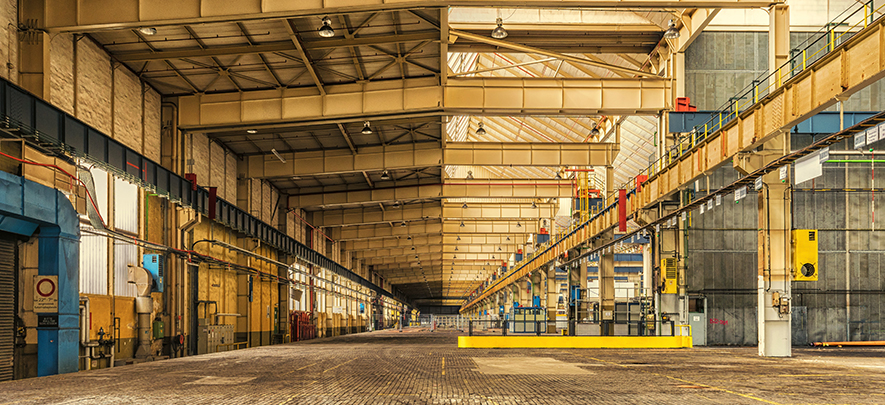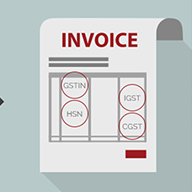Packaging challenges at the warehouse & how to solve them

Logistics & Supply Chain
398 week ago — 11 min read
Packaging was always meant to protect the product while it moves from the factory floor onto massive warehouses and finally reaching the consumer via wholesale or retail outlets. However, since the beginning of the 21st century, consumers wanted to associate with brands who appealed to a certain set of emotions all the while imploring them to psychologically invest in the brand, then just purchasing it off the shelf.
As a result, product packaging has evolved into an extremely elaborate mode of communication with consumers today. For businesses, packaging an item should be sufficient to limit any damage to the item and should be easily accessible to pick and pack.
Effective optimisation of warehouses has always been a major concern for businesses. It is neither about stacking as many product packages as possible nor is it about hiring massive labor to maintain them. Today, warehousing challenges in terms of vendor management, product picking, and packing, are being solved with robust industry best practices.
Technology advancements in warehouse management have played a major part in achieving optimization as well. However, there are factors, which when finely tuned, can help businesses optimize their warehouse(s).
On the surface, warehouse management seems incredibly simple. You stack products, parts, and materials and retrieve them when they are needed, all with the help of manual and mechanical labor. A team member picks the required parts and prepares them either for use or for distribution. Fairly straightforward, right?
If you ask your warehouse manager, he or she would say warehouse management is anything but straightforward. It is nothing but riddled with complications. If it isn’t done right, your labor force ends up wasting time in picking, sorting, and packing products, and there goes efficiency in the bin.
This will also lead to a lack of transparency in the inventory, leading to poor purchasing and production decisions. Without a proper structure, your employees may perform redundant tasks, dragging down the overall efficiency.
1. Starting with Packaging and Pallets
Besides proper storing of items, it is the flawless movement and access which drives efficiency. Many brands and manufacturers are considering warehouse storage of products while designing packages. This approach would help brands optimise stacking/storing securely on pallets.
What will this do? Using a product like pallet is the first step to optimizing warehouse spaces. The items can be stored safely and efficiently, thereby reducing the cost of material handling.
2. Packaging and Minimizing Damage
Right from accepting items from the factory floor, packages are subject to a variety of situations where damage could rampantly occur. Forklifts can drop materials, they can fall from conveyor belts, or fall from broken pallets.
The aim should be to design packages in a way that they are protected from damage, but are light enough to avoid an increase in the weight of fin/finished goods. A light package will also lead to a decrease in final shipping costs.
It is not just damage which might occur during sorting, storing, picking, and packing. The packaging must be robust to minimize (better yet, eradicate) environmental damage as well. Extreme temperature fluctuations, damage caused due to moisture/water, contamination with other goods, or damage from static (mainly for electronic items) should influence warehouse efficiency.
3. Packaging Types
Finished goods receive two kinds of packaging. Internal packaging (what consumers purchase off the shelf), and external packaging for distribution purposes. The internal packaging is aimed at consumers to create a massive brand appeal, with the necessary product information printed on the packaging itself.
The external packaging is primarily designed to a) protect the internal packaging from damage and b) to have information (usually printed on package boxes) to help warehouse personnel identify the contents in quick time (through the use of barcodes and RFID tags). The packaging (from the outside) should be conducive to allow stacking efficiently.
4. Efficient Packaging
A warehouse manager’s dream is to handle packages which are:
- Lightweight
- Protect the internal packages
As a result, the aim of designing product packaging is to make it light so as to make the shipment and storing as pocket-friendly as possible. Organizations usually choose extremely lightweight materials in warehouses.
Paperboard, aluminum, and plastic are the initial choices. Paperboard and plastic are very lightweight and can protect finished items quite well. In addition to this, the recycling aspect of the paper, cardboard, and some plastics can help reduce the amount of waste going into local landfills. Aluminum containers are excellent for some food items as the material is strong, light, as well as recyclable.
Corrugated cardboard boxes are ubiquitous, offer strength, are extremely lightweight, and quite easy to recycle. No wonder corrugated cardboard boxes are very popular and easily available. It is also easy to print package information on these boxes via barcodes and are conducive to a hassle free application of RFID tags on them.
One-half of the solution is to find the right kind of packaging materials to eliminate damage. But without a proper set of procedures for the workers to follow, attaining operational efficiency becomes insurmountable.
Best Practices for Packaging
What do organizations need in order to achieve maximum warehouse efficiency and win consumers with bespoke, top notch product packaging?
A successful business should always start with the consumer in mind. The experience your consumer receives when they lay their hands on your products should be absolutely flawless. No half measures here. However, poor packaging practices or passive adherence to warehouse guidelines have resulted in damaged items delivered to consumers, pushing them away from your brand.
We understand that it is impossible to verify and review every bit of shipment while accepting it at the warehouse level. Why? This is because the product might be shipped directly from the factory/manufacturer or simply because you haven’t gotten enough resources to follow due diligence and micromanage.
These best practices will help you lay a strong foundation while streamlining your warehousing activities to achieve maximum efficiency. Ideally, this should enable a flawless experience for your customers, and ultimately have a positive impact on your bottom line.
How to Manage Picking and Packing Operations
Mis-picks, mis-packs and general errors drive profitability out of operations at the warehouse level.
Ill maintained warehouses lead to haphazard stacking, which ends up damaging packages. When the same packages are picked for consumer delivery, it tarnishes the brand image. Consumers might not only bad-mouth the brand but might end up taking the business through a downward spiral.
The solutions to this predicament should be holistic and address all the facets of the organization’s warehouse operations. Believe it or not, the primary factor involved in optimising warehousing activities is an organization’s culture and its working processes.
How to Fine Tune the Warehouse Culture and Its Process
The picking and packing processes should be well documented and clean of discrepancies and gaps. The procedures should be designed to make it easier for the workforce to diligently follow, thereby reducing error rates. This may sound like common sense, but unfortunately, this is a mistake made by many leading companies in the world.
Establishing an honest platform to exchange feedback is a must. You would be amazed by how many times your workers deviate from set processes, only because it is broken, not effective, or quite unclear.
One way to allow all stakeholders to highlight inefficiencies is to schedule regular meetings to discuss, analyze, and find solutions to fix errors. The aim should be to exchange information and perspectives candidly and free of all cynicism. Once the issues are brought to everyone’s notice, it is then time to implement proven practices at every level.
Money is an Important Factor
Operators are supposed to scan the item SKU via the RF gun and then scan the product SKU label and the pallet SKU label for 100% accuracy. The trouble is that the operators tend to double scan the pallet SKU (because it saves time) but this act fails in increasing accuracy.
Why does this happen? Most of the time this occurs because the operators have no idea about the importance of scanning both labels. And how many organizations incentivise proper practices and punish otherwise? Not many. The devil is in the detail, organizations compensate workers when they achieve higher productivity. It is time to put accuracy on the table.
Worker compensation should help the organization achieve all three goals (short, medium, and long term). Some companies have introduced an “all-or-nothing” bonus. This strategy requires operators to attain achievable levels of throughput, accuracy, safety, and attendance to earn the bonus.
Accomplishing high productivity at the expense of accuracy is a flawed procedure to achieve profitability. Organisations should evaluate policies and also technologies to truly achieve 100% accuracy.
A good place to start is to identify the cost of mis-picks. Sometimes, increasing accuracy by a mere .02 percent can end up cutting down losses significantly. Not to mention when you factor in the soft costs of customer satisfaction and lost sales.
The Holy Trifecta for Operational Excellence
With effective product packaging, combined with right packaging materials and operational procedures, you (organisations) can optimise warehouse operations. These factors, when implemented diligently, can help you manage packages by reducing damages and satisfy your customers through high operational standards.
To explore business opportunities, link with me by clicking on the 'Invite' button on my eBiz Card.
Disclaimer: The views and opinions expressed in this article are those of the author and do not necessarily reflect the views, official policy or position of GlobalLinker.
Network with SMEs mentioned in this article
View Shalmali 's profile
SME Inspirations
Other articles written by Shalmali Patkar
13 unusual materials used in eco-friendly packaging
395 week ago
GST Fundamental: Maintaining accurate records
405 week ago
Most read this week














Comments (1)
Share this content
Please login or Register to join the discussion